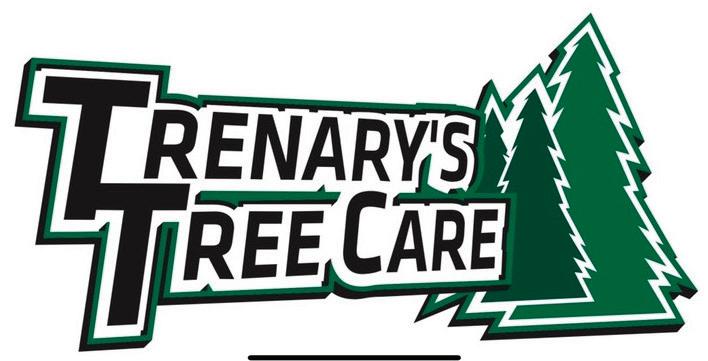BALDWIN CITY FIRE DEPARTMENT HOSTS BACK-TO-SCHOOL WATER FIGHT
Downtown Baldwin City was filled with laughter, squeals, and plenty of splashes on Friday, August 15, as the Baldwin City Fire Department hosted its annual City Water Fight to kick off the school year.
The event, held in front of the fire station between 6th and 7th Streets, took place during the Third Friday Market and drew a big crowd of families ready to cool off on a hot August evening. Participants were invited to bring their own water guns and join the fun—though water balloons were off the list this year.
Fire Chief Terry Baker had been looking forward to this community tradition for months. He and his team of firefighters, who not only serve but also live and volunteer within the community, traded fire hoses for water cannons as they joined kids and parents alike in a playful battle that left everyone drenched and smiling.
The Maple Weekly’s own photographer climbed to the top of the firetruck’s extension ladder to capture the scene from above. Despite the challenge of keeping her camera dry, she described it as one of her favorite assignments of the summer. “The kids and firefighters had a blast,” she said. “It was the perfect way to cool down on a hot August day!”
With a great turnout and plenty of water-soaked fun, the City Water Fight once again proved to be more than just an event—it was a celebration of community spirit, the dedication of local firefighters, and the excitement of a new school year ahead.

COMMUNITY
THE WOMAN WHO REVOLUTIONIZED SEWING
By Sharon Vesecky & Liz Granberg-Jerome
If you’re like me, you may never have heard of Helen Blanchard. However, as a life-long seamstress and quilter, I’ve learned that Helen Blanchard is an important person in the evolution of the sewing machine who we all should know. It is because of this amazing woman that we have the zigzag function on our sewing machines. In recognition of her accomplishments, the Quilt Capital of Kansas, with partners Quilters’ Paradise and the Lumberyard Arts Center, will celebrate Helen Blanchard Day on Wednesday, August 27 from 1-3pm in the LAC Courtyard. The celebration will feature articles about the evolution of the domestic sewing machine, as well as information specific to Helen Blanchard’s contributions to the textile arts. Charles McFall has donated a sewing machine for a raffle to support the Quilt Capital of Kansas programming. Get your tickets at the celebration or at Quilters’ Paradise—drawing to be held in October near Blanchard’s birthday. Born on October 25, 1840, Blanchard had a natural aptitude for tinkering with and improving mechanical devices. After her family lost their fortune in the 1866 business panic and her father’s subsequent death, Blanchard went to work in a clothing factory to help support
her family. At that time, early industrial sewing machines were being used in the factories; however, buttonholes that required a zigzag or cover-stitch were still made entirely by hand. In 1873, she borrowed money to pay for her first patent for the zigzag sewing machine that soon became standard in garment factories and revolutionized the ready-to-wear clothing industry. Her 1873 zigzag machine resides at the Smithsonian Museum of American History in Washington, DC.
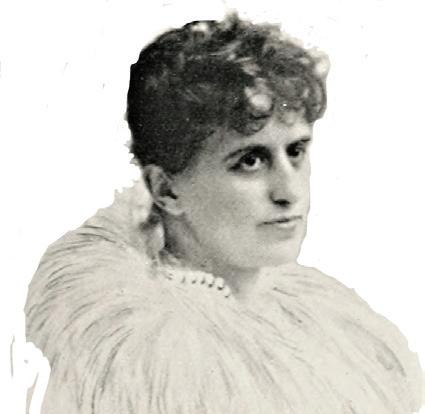
From 1873 through 1915, Blanchard received 28 patents, 22 of which were related to sewing machines used primarily in the industrial sewing industry. The zigzag stitch didn’t make its way into domestic sewing machines until the 1930s, more than a decade after her death in 1922. The Necchi BU was the first dedicated zigzag machine introduced to the consumer market in Italy in 1932. The Singer 206K zigzag machine was introduced in Germany in 1938; however, it wasn’t produced in the United States until the 1950s.
With millions of Singer Featherweight 221s already in homes across the country

and around the world, Singer invented the Singer Automatic Zigzagger with pop-in cams to create zigzag stitching of varying width. The Zigzagger attached to the needle bar in place of the presser foot and moved the fabric back and forth to create a zigzag or buttonhole stitch, rather than the needle moving back and forth as on modern machines.
The 1953 Singer 301A, a slant shank, straight stitch machine that I learned to sew on in the 1960s, came with a buttonhole attachment similar to the early Zigzagger that still, to this day, makes the best buttonholes of any machine I’ve ever sewn on. The attachment came with multiple cams to stitch various styles and sizes of buttonholes that could be made in a single step with the correct cam, even on a straight-stitch machine.
My husband Les, an amazing quilter in his own right, switched from his Singer Featherweight 221, which he still takes to retreats and sew-days because of its portability, to a Singer 403A with built in zigzag for his sewing at home. The Singer 403A has various zigzag widths built in, as well as drop-in cams for a wider range of decorative stitches in a machine he can service and maintain himself. Although I often go back to my modern Brother Runway for the zigzag or buttonhole stitches for my own projects, I certainly appreciate his solid metal, computer-free machine!
With the modern computerized machines now featuring hundreds of decorative stitches, without Helen Blanchard and her initial invention of the zigzag stitch, we might still be sewing with straight stitches only.
HELEN BLANCHARD DAY
SHERIFF’S OFFICE LAUNCHES LABOR DAY PATROLS TO TARGET IMPAIRED AND DISTRACTED DRIVING
The Douglas County Sheriff’s Office urges residents to avoid impaired and distracted driving, and deputies will take part in enhanced patrols starting this weekend through the Labor Day holiday weekend, aimed at removing dangerous drivers from roads and highways.
The Sheriff’s Office along with several agencies in Kansas is participating in enforcement for the national impaired driving campaign beginning Saturday, Aug. 16, and the Kansas Department of Transportation and several Kansas agencies have partnered to encourage safe driving during the Labor Day weekend, when historically there is an increase in impaired driving and crashes.
“There are many exciting things happening this time of year with college and school starting and people looking to celebrate around Labor Day weekend. We encourage everyone to celebrate safely in avoiding distractions, and if you drink, don’t drive,” Sheriff Jay Armbrister said.
Lt. Caleb Chaffin in this video discusses the program and the risks of impaired driving: https://youtu.be/ dRaF4OWUFik?si=9aTUEcWhjtHrUMEf
“When people see deputies out up and down roads and highways, they are more likely to follow the rules of the road. And whenever they see deputies driving through the campgrounds they are less likely to get behind the wheel if they’ve been drinking,” said Chaffin, who coordinates the county’s Special Traffic Enforcement Program.
“There are many preventive ways, including using a designated driver or ride-share service, making it super easy to call up a ride from your phone. And it’s a lot cheaper than having to fix your car or having to pay court costs. I tell people that it’s better to be there a little late, than to not be there at all.”
The enhanced patrols are as part of the “You Drink. You Drive. You Lose” campaign. When convicted for impaired driving, drivers face stiff penalties, including financial consequences – from fines, legal fees and lost time at work to jail time.
The campaign is funded by the National Highway Traffic Safety Administration (NHTSA) with safety funds administered by KDOT. Please drive responsibility. For more information about impaired driving, visit www.KTSRO.org.
2025 BALDWIN CITY ELECTION CANDIDATE FORUM
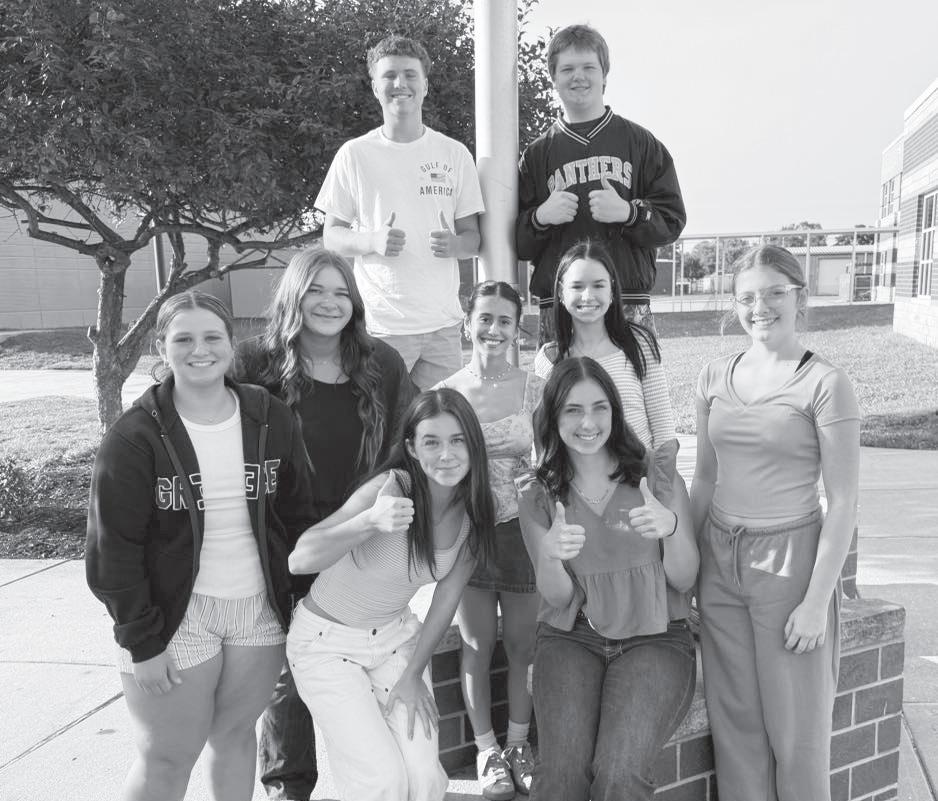
Performance Arts Center at Baldwin City Junior High School
The Baldwin City Chamber of Commerce is proud to host a Candidate Forum for both Baldwin City City Council and Mayor. This is your opportunity to hear directly from those running for office and prepare for the upcoming election.
Stay tuned! We’ll continue to share updates weekly as planning progresses.
In addition, the Baldwin City Chamber of Commerce is partnering with The Maple Weekly to publish a special Election Issue on September 10, 2025— just in time for early voting! This issue will feature candidate bios and Q&As to help you make an informed decision.
We appreciate your patience as all parties prepare for this important community event.
MEET THE BULLDOG BULLETIN TEAM
Say hello to the 1st Hour Digital Media Newspaper class! This talented group of Baldwin High School students will be running the Bulldog Bulletin online website and managing its social media pages. Throughout the year, you can look forward to fun, engaging, and informative stories—written by local students about local education and community life. Some of these student-written stories will also be featured in The Maple Weekly, giving the community another way to enjoy their work.
Follow along for updates and new stories at: www.bulldogbulletinonline.com

EMERGENCY MANAGEMENT ACCEPTING REGISTRATIONS FOR ITS FALL 2025 PREPAREDNESS, SAFETY TRAINING COURSE
Douglas County Emergency Management is accepting registrations for its Fall 2025 CERT (Community Emergency Response Team) weekend class. The course is designed to teach individuals to be better prepared to help themselves, their families and communities before, during and after a disaster.
The training will be Oct. 3-Oct. 5 at the Douglas County Fairgrounds, 2120 Harper St., in Flory Meeting Hall. The hours are:
Friday, Oct. 3 - 5:30 p.m. to 9 p.m.
Saturday, Oct. 4 - 8:30 a.m. to 5 p.m.
Sunday, Oct. 5 - 12:30 p.m. to 4 p.m.
The training is free, but individuals need to register on the county’s website.
The training course includes information about disaster preparedness, fire safety, medical operations, light search and rescue, terrorism, team organization and other safety measures.
At the conclusion of the training, individuals may register to become a CERT volunteer. Authorized CERT volunteers provide support to first responders and other agencies during a disaster and at community events as directed by Emergency Management.
If you have questions, please contact Emergency Management.; https://www.dgcoks.gov/emergency-management/contact
HELP WANTED: KANSAS ROOM COORDINATOR
The Baldwin City Public Library is hiring for our Kansas Room. The position is $15 an hour and is 11 hours a week.
The job requirements are as follows:
• Provide high quality customer service, assisting patrons in the Kansas Room
• Work with Kansas History and Genealogy
• Act as ambassador to partnering businesses and organizations
• Research historical subjects
• Organize and maintain Kansas Room files
• Answer email requests from patrons regarding genealogy and historical information and facilitate patron research and use of Kansas Room resources
• Organize and oversee volunteers and volunteer tasks in the Kansas Room in collaboration with the Director
• Maintain obituary records
• Prepare photographs for scanning and work with Director to increase digital preservation of materials
• Obtain and preserve contributions
• Promote local history information
• Maintain awareness of Kansas Room visitors and areas of research or need
• Other duties as assigned
• Job announcement will close when position is filled
For more information, please contact: (785) 594-3411 baldwinpl@baldwin.lib.ks.us
URBAN LEGEND SAYS
THE ‘TONGANOXIE SPLIT’ PROTECTS KANSAS CITY FROM TORNADOES. IS IT REAL?
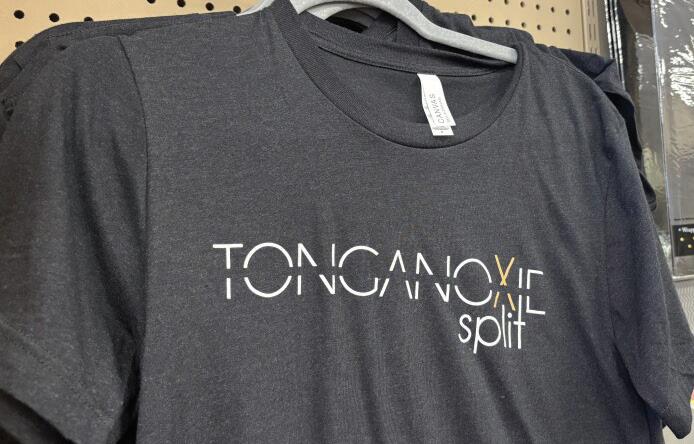
Story by Maya Cederlund, Kansas News Service
A local weather phenomenon holds that the 6,100-person town of Tonganoxie, Kansas, can weaken and divide thunderstorms and tornadoes. Experts are mixed on its existence — and what causes it — but locals say otherwise.
Rita Bennett remembers the day a twister ripped through Topeka, Kansas, like it was yesterday. Bennett, her mother, father and grandmother were returning from a grocery run in north Topeka, when the sirens went off. She and her family went to her aunt’s home and sheltered under tables in the basement corner.
Bennett, who was about to turn 10 years old at the time, got separated from her parents in the basement. She remembers desperately grasping for her father’s hand, but he was just out of reach. The sound of the tornado, she said, was deafening and unforgettable.
“It was just the most awful sound I think I’ve ever heard — things hitting the table, the thunder, the sound,” Bennett said. “I swear the train was going through the house, and it seemed like forever, and then it just stopped.”
The 1966 Topeka tornado killed 17 people, injured more than 500 people and caused $2.3 billion in damage, adjusted for 2023 inflation, making it one of the nation’s costliest tornadoes. The twister tested the longstanding urban legend, based on an oral story passed down by Potawatomi tribe spiritual leaders,
that Burnett’s Mound could deflect tornadoes and spare Topeka from incoming storms.
Bennett, and others, say the addition of a water tower and construction around the mound six years earlier opened the door for the devastating twister.
“You protect the mound, and it will protect you,” she said. “They shouldn’t have touched Burnett’s Mound. It was karma.”
Another Kansas weather legend is better known around Kansas City. The Tonganoxie
Split holds that the physical — or even “mythical” — aspects of Tonganoxie, Kansas, 28 miles west of Kansas City, cause tornadoes and storms to split and weaken, sparing the metro area from inclement weather.
The last tornado to hit Tonganoxie, in May 2000, caused $2.6 million in damage and no recorded deaths or injuries.
Most Tonganoxie locals believe at least somewhat in the phenomenon, but the scientists KCUR spoke to were split on its plausibility. KSHB’s Wes Peery couldn’t find a definitive conclusion when he investigated the Split, either.
The Tonganoxie Split likely originated after people misunderstood a decree from Chief Tonganoxie of the Delaware tribe, as Jim Moore, author of a fictional book centered around the Split, told the Lawrence JournalWorld in 2014. When Chief Tonganoxie’s decree stated there would be “no more storms,” he spoke about an end to violence, not about the weather, Moore said in the 2014 interview.
WDAF weatherman Dan Henry also referenced the Split several times in his broadcasts, a 1984 Kansas City Times article reported.
Jonathan Kurtz, a warning coordination meteorologist at the National Weather Service’s Pleasant Hill, Missouri, location, said the Split is “ingrained in the weather lexicon of Kansas City” but lacks scientific backing.
Most places in America have legends similar to the Split, he said. “Everywhere I’ve worked, there has been something like this,” Kurtz said.
He said urban legends like the Split spread because of “general confirmation bias.”
“It’s inherent that human beings always want to know why. Why does something happen?” Kurtz said. “We’re always looking for an answer, and we see something like that, it’s talked about, and it just kind of grows with time.”
In Tonganoxie, it’s considered common knowledge.
“Oh, I know it’s real,” said Bob Hurst, a Tonganoxie resident in his mid-70s.
“You can see thunderstorms coming, we’re going to get hit with them, and, all of a sudden, they just kind of go to the north, to the south of us.”
Bob Hurst lives in Tonganoxie and says he knows the legendary Split is real.
Bob Hurst lives in Tonganoxie and says he knows the legendary Split is real. (Laura Ziegler / KCUR 89.3)
John Lavin, a Rimkus Consulting Group forensic meteorologist, said otherwise. The Split may exist under certain conditions, but needs more scientific documentation, Lavin said.
It’s less about whether the Split exists, and more about if certain climatological factors cause storms to split or change before they reach urban areas.
Thunderstorms need three “ingredients” to form: moisture, unstable air and lift. Thunderstorms form when air warmed by the sun’s heat begins to rise, called an updraft, and carries evaporated water upward to form a cloud. The cloud grows if the warm surface air is lighter and warmer than the air around it.
Clouds then darken as they fill with water, and cool, dry air from the Earth’s upper atmospheric layer — called a downdraft — pulls the moisture down and causes it to rain. The Kansas City area is prone to thunderstorms because of the warm, moist environments in the spring and summer and strong, western
winds in the spring.
Dev Niyogi, an Earth and planetary sciences professor at the University of Texas at Austin, has conducted research that found cities change the structure of thunderstorms. Niyogi’s 2011 study found that thunderstorms changed structure over the Indianapolis metro region, and his 2014 study found that tornadoes touched down around 10 miles from urban areas in Indiana.
Niyogi said the size and shape of a city could split storms. The topography, such as hills or mountains, and a city’s relative warmth compared to surrounding natural areas could cause thunderstorms to break apart as well. “It could just be the storm characteristics itself,” Niyogi said. “Is it rolling in, or is it a fastmoving storm?”
KCUR asked scientists if the factors Niyogi listed could influence storm splitting. They either offered a different opinion or said there wasn’t enough research to back anything up.
“There’s been a lot of research done, and honestly, if you look at a lot of the papers … the conclusions are all over the place,” Kurtz said.
The Tonganoxie Split is well-known in town, with some businesses selling T-shirts.
The Tonganoxie Split is well-known in town, with some businesses selling T-shirts. (Laura Ziegler / KCUR 89.3)
San Jose State University Professor Emeritus Robert Bornstein said urban heat islands — which form when buildings, roads and other manmade structures absorb and reemit the sun’s heat more than surrounding natural landscapes — can push heat up into a storm, disrupting its fragile physical and chemical components.
Building barriers also significantly impact storms, Niyogi says, like when a car avoids a barrier. “It is not going to hit that barrier and take a left turn,” he said. “It is slowly going to swerve itself away from that barrier, the same way the winds do that.”
Bornstein studied thunderstorm behavior over large urban areas in Beijing, New York City, Atlanta and Houston. He found that under certain conditions, thunderstorms split or converged over these cities. The seasons, temperature and wind temperament determined how thunderstorms interacted with urban areas.
Kurtz pointed out several tornadoes that have hit large cities recently – including just across the state in St. Louis this spring, and in two larger Texas cities, Fort Worth and
COMMUNITY
Lubbock, in previous decades.
Despite new radar and data and technology “growing leaps and bounds,” scientists still don’t know a lot about how storms impact the immediate environment, Kurtz said.
Hills and mountains, like buildings, can disrupt and redirect wind flow with their height, according Niyogi. Mountains can destabilize thunderstorms in eastern America but initiate storms in the west, Lavin said. That’s why Denver is so prone to hailstorms, he added.
Here’s where the Split comes in.
Bornstein believes the Kansas City metro area, not Tonganoxie, causes storms to split. Tonganoxie doesn’t have enough tall buildings or a large enough urban heat island to disrupt storms, he said, but Kansas City does.
Niyogi said Kansas City and Tonganoxie work in tandem to split storms. “It is probably the two of them together that are doing this,” he said. “So, let’s give Tonganoxie some credit.”
“The Tonganoxie Split: The Mystical Powers of the Hills” is the title on one of the book spines painted into a mural at East Fourth Street and Delaware Street in Tonganoxie by artist Kelly Polling.
“The Tonganoxie Split: The Mystical Powers of the Hills” is the title on one of the book spines painted into a mural at East Fourth Street and Delaware Street in Tonganoxie by artist Kelly Polling. (Laura Ziegler / KCUR 89.3)
Wanyun Shao, an environmental social scientist and associate professor of geography at the University of Alabama, said that people believe in weather phenomena like the Split because of something called “motivated reasoning.”
Shao, who authored a 2015 journal on how local weather events influence public perceptions of climate change, said that while confirmation bias partially explains the psychological reasoning behind why people believe in weather myths, motivated reasoning would be a more accurate term.
“People feel more motivated to believe in this myth if their house was spared from the last hits by this tornado,” she said. “They’re motivated to believe, ‘Oh, I was spared this time. I will be spared forever because there is some kind of mysterious power.’”
Still, not all residents are convinced there’s an earthly explanation.
Gabrielle Borjon has lived in Tonganoxie for 14 years, and says the Split is real.
Gabrielle Borjon has lived in Tonganoxie for 14 years, and says the Split is real. (Laura Ziegler / KCUR 89.3)
Gabrielle Borjon, who’s lived in Tonganoxie for 14 years, believes in the Split because “real bad storms just skip over us without fail.” Tornadoes in Tonganoxie are unheard of, she said.
“If there’s a severe storm on either side of us, it almost always goes around. We’ll get thunderstorms and rain and stuff, but nothing too severe,” Borjon said. “I feel like that’s not a coincidence.”
Regardless of what the science says, people just want to make sense of the world and feel safe.
“It can happen to anybody,” Shao said. “They just want to feel they’re the lucky ones that will avoid this kind of catastrophe.”
— Maya Cederlund is the 2025 summer intern for KCUR. Email her at mcederlund@kcur.orgxxxx
BACK TO SCHOOL SMILES!
THE FIRST FEW DAYS ARE IN THE BOOKS, AND OUR TEACHERS, STUDENTS, AND STAFF ARE ALREADY OFF TO A GREAT START. THIS WEEK MARKS THE FIRST FULL WEEK BACK, AND WE’RE EXCITED FOR ALL THE LEARNING, GROWING, AND MEMORIES AHEAD. HERE’S A PEEK AT THE ENERGY AND EXCITEMENT FROM THE FIRST DAYS OF SCHOOL!
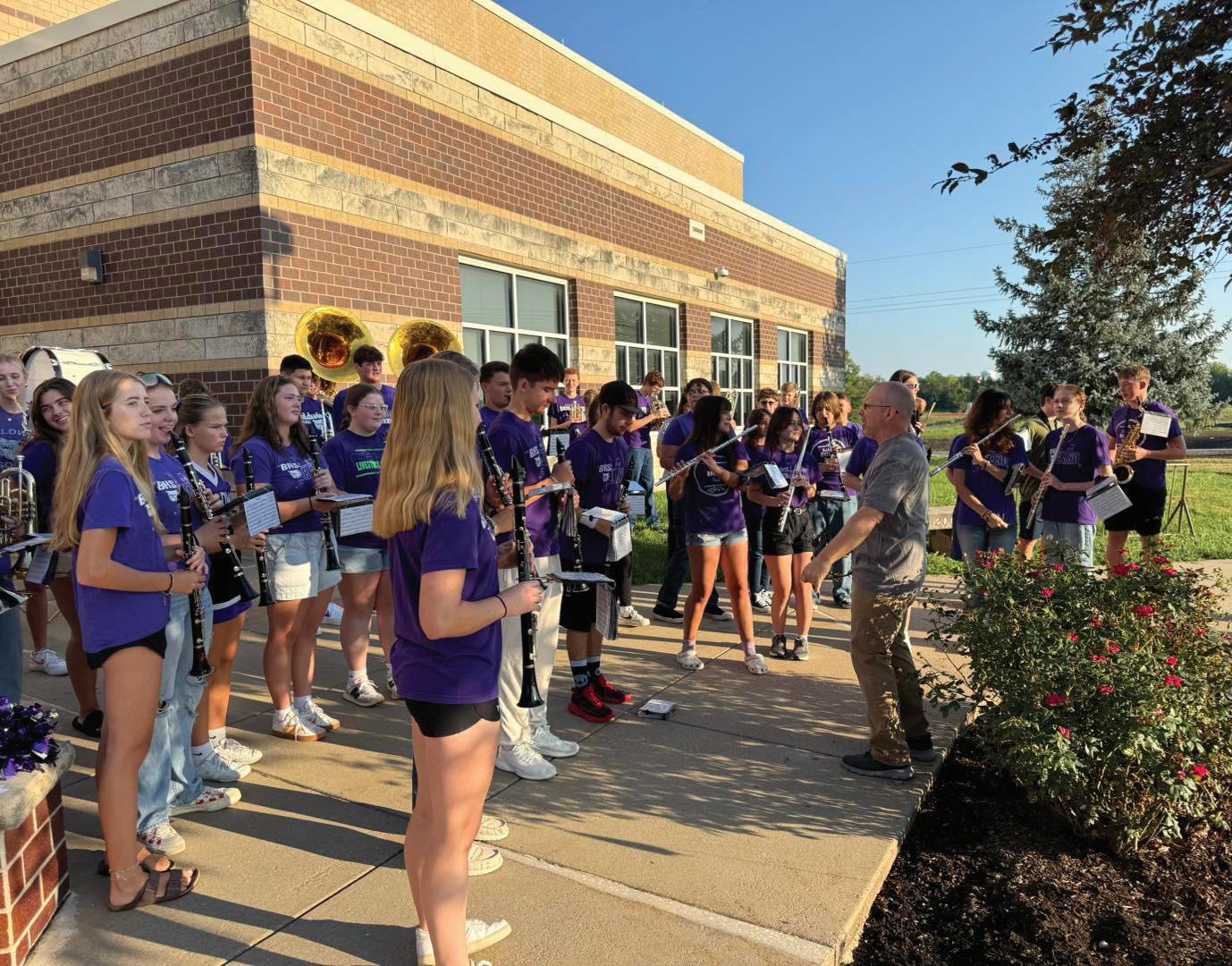
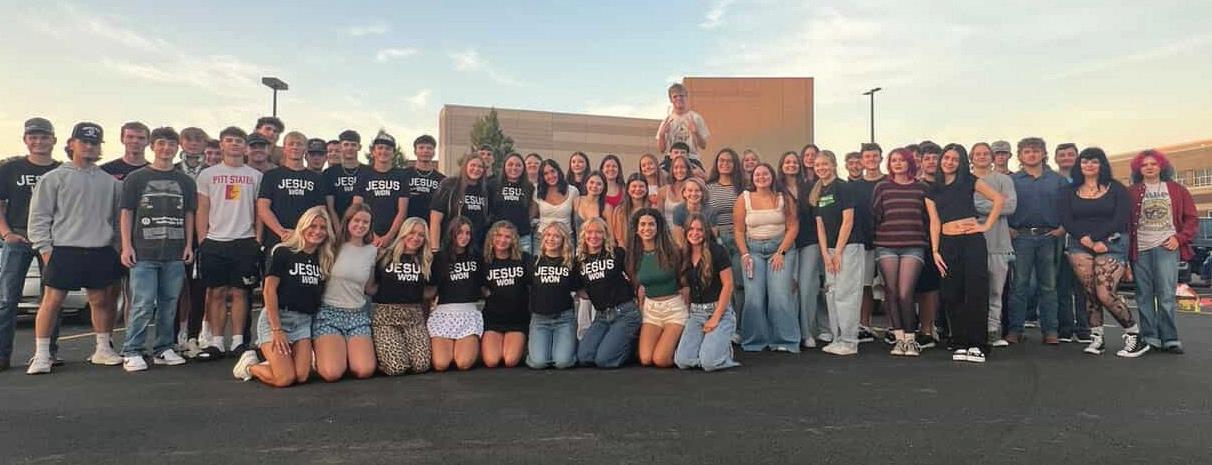


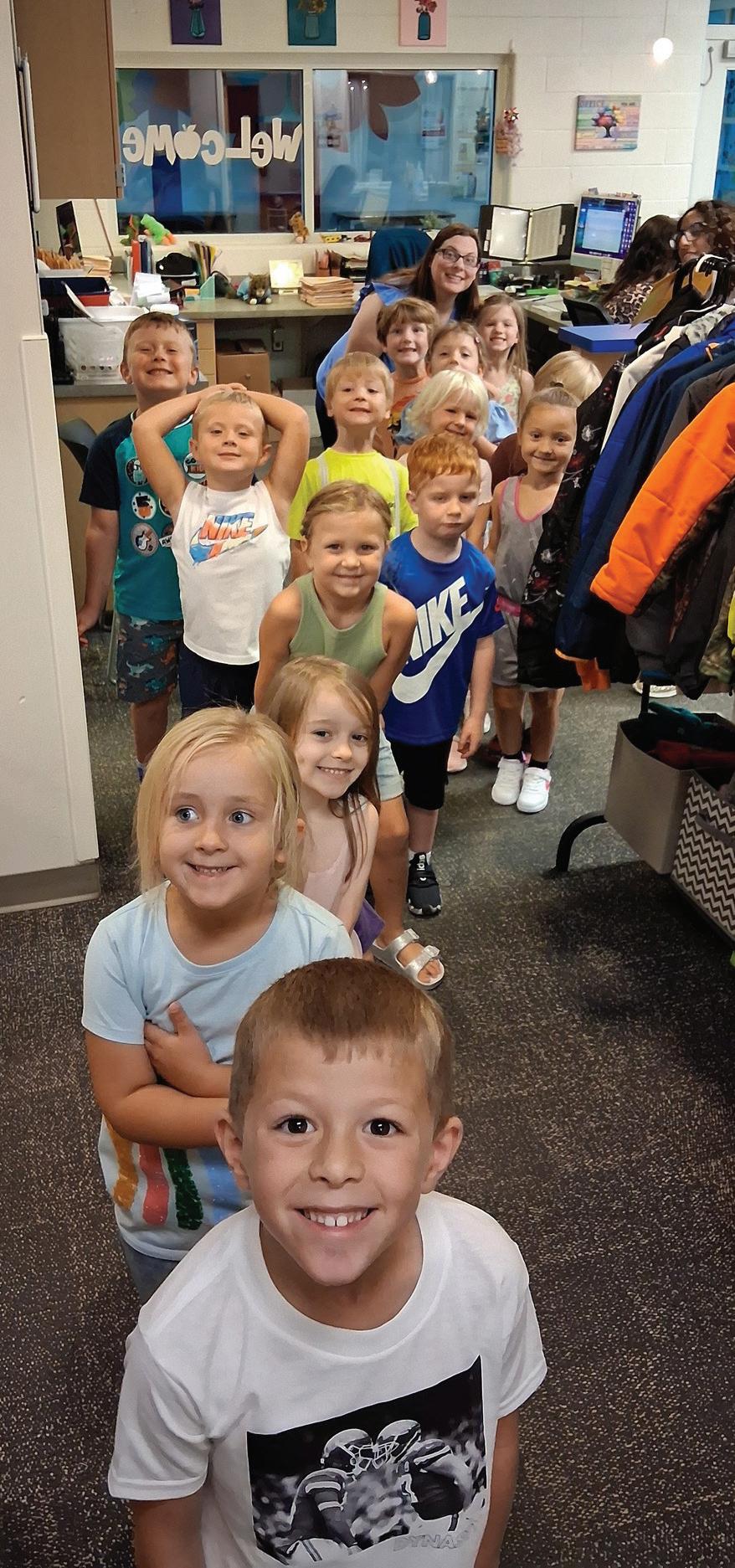
BEING A HIPPIE

THINKING OUTSIDE THE BOX
By Jeanine Ross
I am proud to say, I was and will always be a hippie! I was in my teens when that word was created for people who refused to live inside the confines of society. We were (and still are) free thinkers. We bucked authority in the way we lived our lives and we set our own standards for normal. I miss those days! I miss being able to spot fellow free thinkers simply by the way they dressed or wore their hair or their self made jewelry. There are a few of us still adhering to the hippie code, but as society evolved, it became less hip to be a hippie out loud. Now hippies are called liberals and they dress the same as everybody else and their political views are confined to the ballot box. That’s not a bad thing, it’s just an era that once defined freedom, peace, love and radical change has moved into the archives of our development. If you missed it, I’m so sorry you did, but let me tell you, it was magical! Being a hippie was a lot of fun! We were all about changing the status quo in a loving and peaceful way. We were strong in our beliefs and devoted to our mission but most of all, we loved each other! We never preached our beliefs to other people, we just lived them unapologetically out loud and welcomed any and every one that
decided to join us. Being a hippie meant connecting spiritually on a higher plain and letting our connection drown out other people’s objections. We purposefully lived in an energy that lifted us above the mirk and mire of the time but instead gave us as a group a perspective on what it means to live love.
When I say it was a magical time, I mean it was a time like no other and probably won’t ever recreate itself again. Being a hippie meant our souls actively sought after peace, love, understanding, and change, in a radical revolution! We didn’t know it at the time, but we were a channel of light from a spiritual place of power and evolution. We were more than a movement, we were the beginning of a thought changing process that needed to take place to open the door for humanity to go from rigidity to fluid, from stifling to flowing and from conformity to possibility.
We opened the door to change without violence. We showed the world what it meant to change through love and persistence and joyful destruction of the norm. Yes, I am proud to be a hippie and grateful that I got to live it! It is an experience that completely changed my life for the better and set me on a path of enlightenment I would otherwise have never experienced.
So, if you really want to change your life for the better, it begins with “Thinking Outside the Box!”

WHAT’S HAPPENING AT THE REC?
Now Hiring After School Program Director: Must be 18+ years old with a high school diploma or GED. Must love working with kids and creating a fun, safe environment. Oversees a team of 5-7 staff. $17/hour. For more details or to apply, check out our website here.
Looking for Volleyball and Flag Football Officials: Must be 14+ years of age. Soccer games played on weekends; volleyball and flag football games are weeknights. General knowledge of rules a must. Uniform is provided. Applicants must attend mandatory training sessions.
Micro Soccer Registration: We have a special program just for the youngest members of our community! BCRC has partnered with Challenger Sports to provide an innovative program that introduces children ages 2-4 to the fundamentals of soccer. Their team of international coaching staff uses games, activities, and stories to teach balance, agility, coordination, technical and gross motor skills as well as social skills, self-confidence, communication, and teamwork. Registration ends August 29. Sign your child up today!
Fitness Class Registration: We’ve got three great options for fitness classes this fall, all taught by our fabulous instructor, Echo! Whether you’re looking for an early-morning sweat, a mid-morning pick-me-up, or an evening conditioning set, we have a class to fit your needs (and your schedule!). Check out all our options at our website!

COMMUNITY VOICES/EVENTS
KEEPING HOME, KEEPING HEART

DEAR HOMEKEEPER
By Cat Henry
August is almost over. A welldeserved Labor Day weekend is on the horizon. College kids are gone with their extra-large twin sheets and a hug that probably lingered a bit too long. Backpacks and lunches are organzed, and the re-establishment of family rhythm of routines and homework spaces. There’s satisfaction in knowing the people we love are cared for, supported, and settled into their next season.
Now that the dust has settled some, the quiet question may arise: What about me?
For the homekeeper, whether you work remotely, outside the home or manage it full-time, the rare moment may arise to develop a spot for you to rebalance. The energy you’ve poured into your people can now be turned inward, not selfishly, but in stewardship for your own wellbeing.
Think of it as a “wellness spot” for unwinding and putting the world on pause. Whatever you do in those spot, the goal is to create serenity. Be it for reading, practicing yoga, meditating, crafting, playing music, puzzling, or doing whatever self-care ritual speaks to you.
Maybe that looks like a personal small corner for yourself, perhaps something as simple as placed near a clean sunny window to look through. Add a comfortable chair, a side table for your favorite beverage, and a lamp. Keep a basket with a current book, journal, or knitting so it’s always ready when you are. Try to unplug from tech and phone scrolling.
Or it could be a sensory enhanced nook greeting you every time you walk by reminding you to visit: a tray with a favorite scented candle, a vase of fragrant flowers, or even a dish of wrapped chocolates. It doesn’t have to be large space, but it does have to bring beauty and comfort to you.
Perhaps it’s a hobby station, be it a shelf, rolling cart, or small table with fun baskets to hold your supplies that are yours alone: watercolor paints, coloring
books for adults, a crossword or regular puzzle-in-progress, quilting or even a place to practice calligraphy or hand lettering. Easy enough to tidy up and visible enough to inspire you.
We all need routines, spaces to grow, and the homekeeper is no exception. A home that reflects the well-being of its keeper is a home where everyone benefits. So, after the backpacks are hung and the pencils are sharpened, give yourself permission for a sacred place for you. Not as an afterthought, but as an essential part of keeping a home, and a heart in balance. When I was working outside the home, my mind would drift to my family; when at home, it would wander back to work, Go figure. I can even remember going to work to rest from being at home. I had a designated work area in my places of employment and if you do also, treat yourself to some fresh flowers, a favorite mug, a framed photo, or maybe a fun matching desk set just for you, to make the space personally inviting.
I would hesitate to come up with something as described here for me in my home. I rationalized it would be just be another opportunity to straighten up when I left that spot, so the kids didn’t get into it. And extra house space was also an issue. My solution was a getaway of my own: taking a spa-like bath with bubbles, flickering candles, sometimes a book or music, and always a mug of herbed tea or a London Fog latte tea. Giving myself a manicure, letting it dry before rushing off to whatever, invariably smudging them.
My parents created a version of a sound room for themselves what with all my dad’s stereo equipment collection. On Sunday afternoons they would play some opera music or something from their vinyl collection and just sit to enjoy it. My four siblings and I knew to give them peace and quiet.
Whatever your passion be, art, yoga, music, design a home space to include that passion. Gift yourself the indulgence to create it. You deserve it.
Until next time, with grace. Cathenry. ch@gmail.com
P.S. May your home, and the one who keeps it, be well tended.
EVENTS EVENTS
August 23
Saturday Morning Farmer’s Market near Sullivan Square
8:00 a.m. - 10:30/11:00 a.m. questions? contact hornbergerfarms@gmail.com
August 25
Tech Time
Baldwin City Public Library 800 7th St 3:00 -4:00 p.m.
August 27
Helen Blanchard Day
Lumberyard Arts Center 718 High St 1:00 -3:00 p.m.
August 30
Saturday Morning Farmer’s Market near Sullivan Square
8:00 a.m. - 10:30/11:00 a.m. questions? contact hornbergerfarms@gmail.com
September 6
BC Fashion Show
6:00 PM: Fashion Show 7:00 PM: Garden Party, Live Music Lumberyard Arts Center
September 8
Breakfast of Hope
HeadQuarters Kansas 2110 Delaw., Lawrence, KS
8:00 - 10:00 a,m.
September 19
Third Friday Market
downtown Baldwin City
6:00 p.m. – 9:00 p.m.
September 20
Big Hair on the Square 6:00 PM, Sullivan Square
September 27
Baldwin City Trivia Night, Hosted by the Baldwin City Chamber of Commerce
Baldwin City Community Center Details TBD
October 4-5
Kaw Valley Farm Tour
Kaw Valley www.douglas.k-state.edu/programareas/kaw_valley_farm_tour/
October 18-19
Maple Leaf Festival
downtown Baldwin City
October 25
Maple Leaf Gravel Grind
downtown Baldwin City
8:00 p.m.
October 25
Maple Leaf Beer, Wine, and Spirit Fest
downtown Baldwin City 2:00-5:00 p.m.




